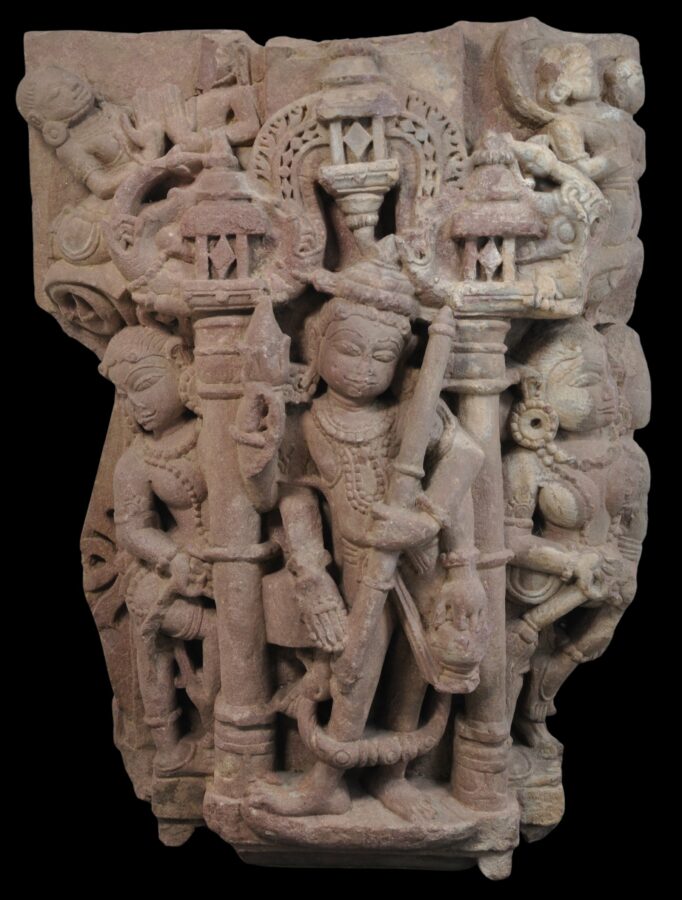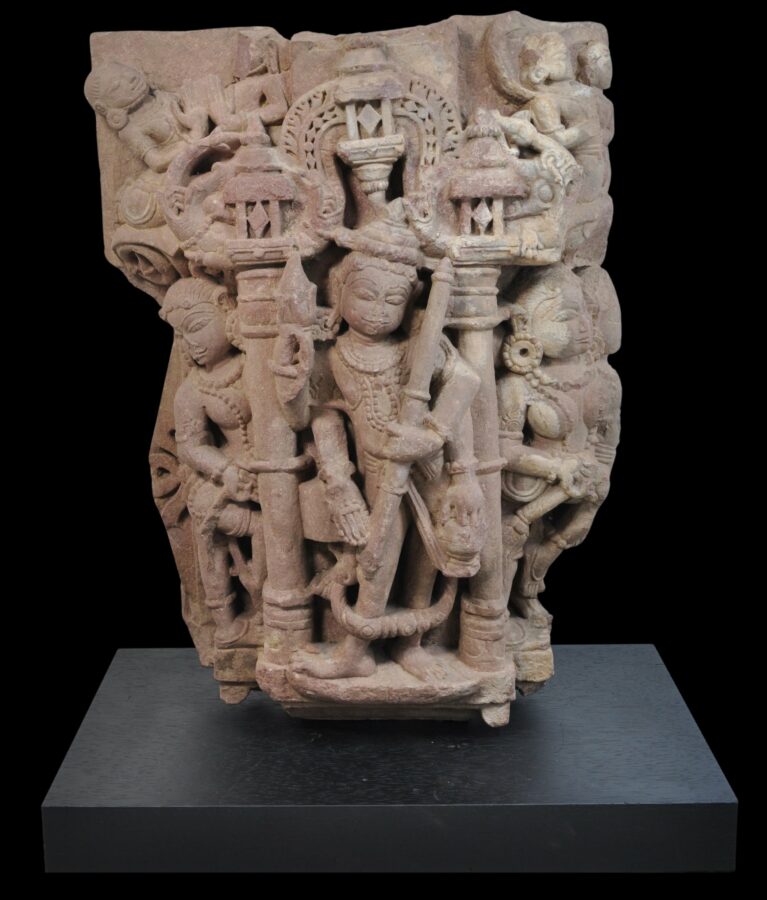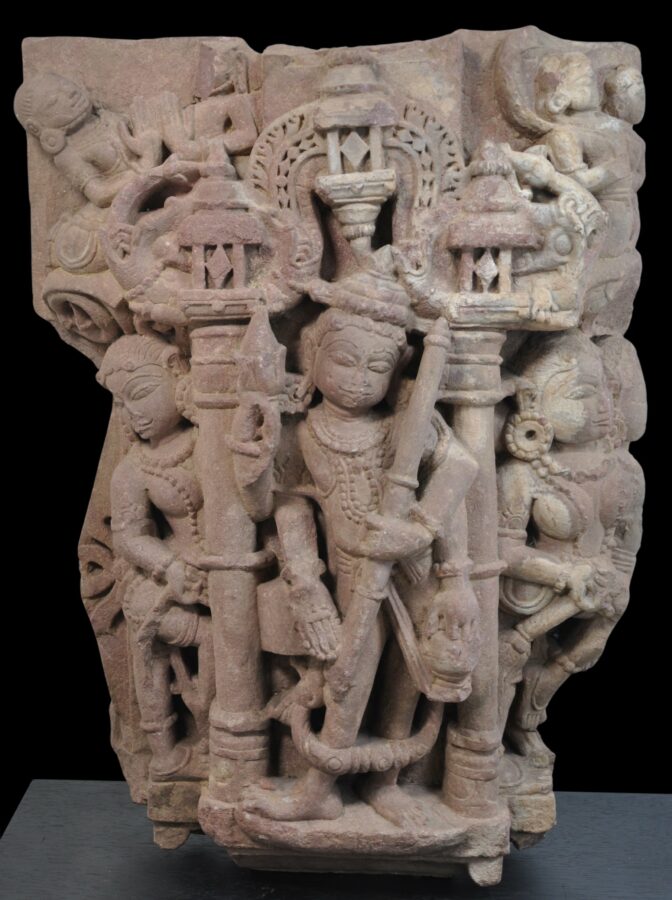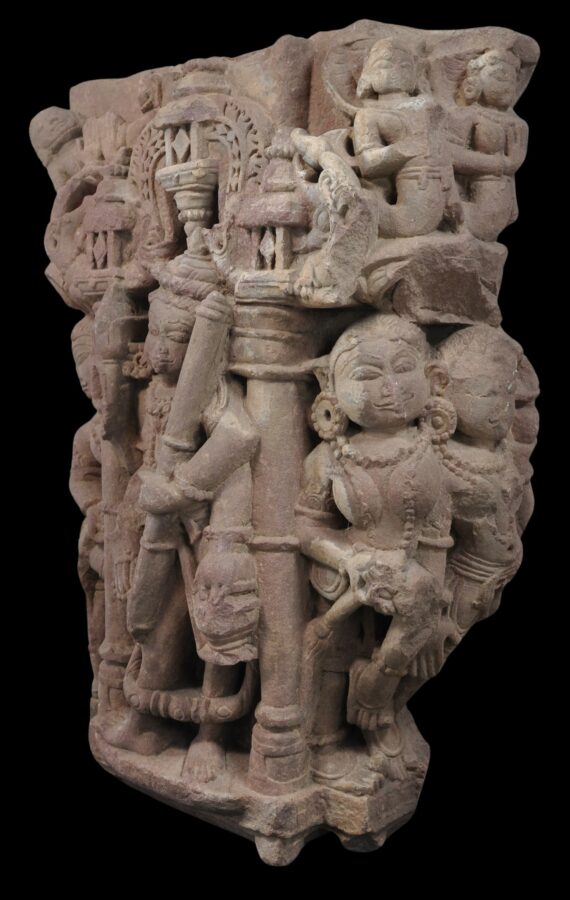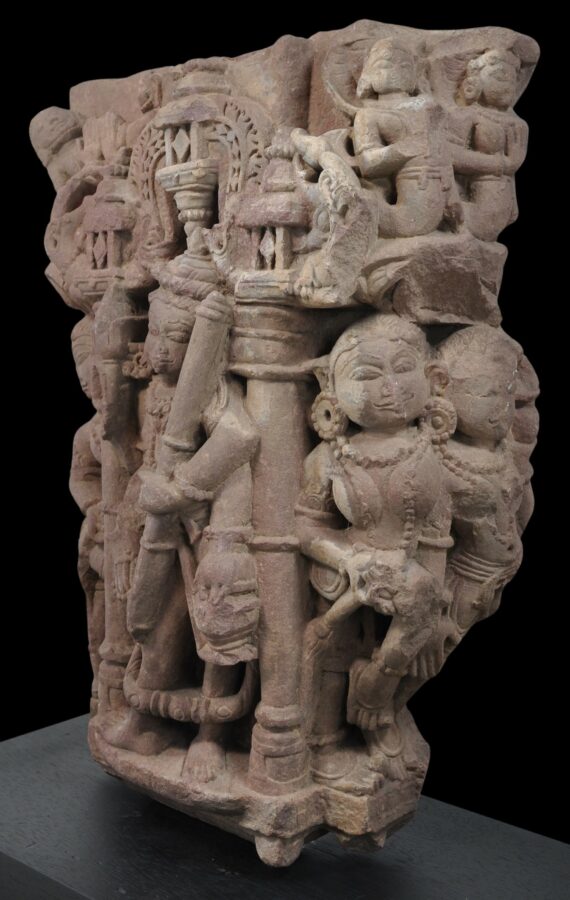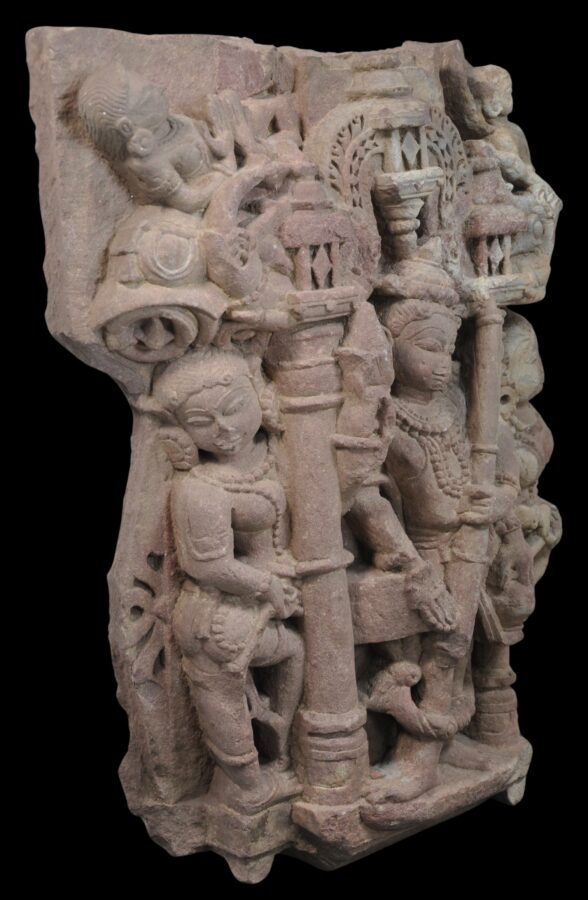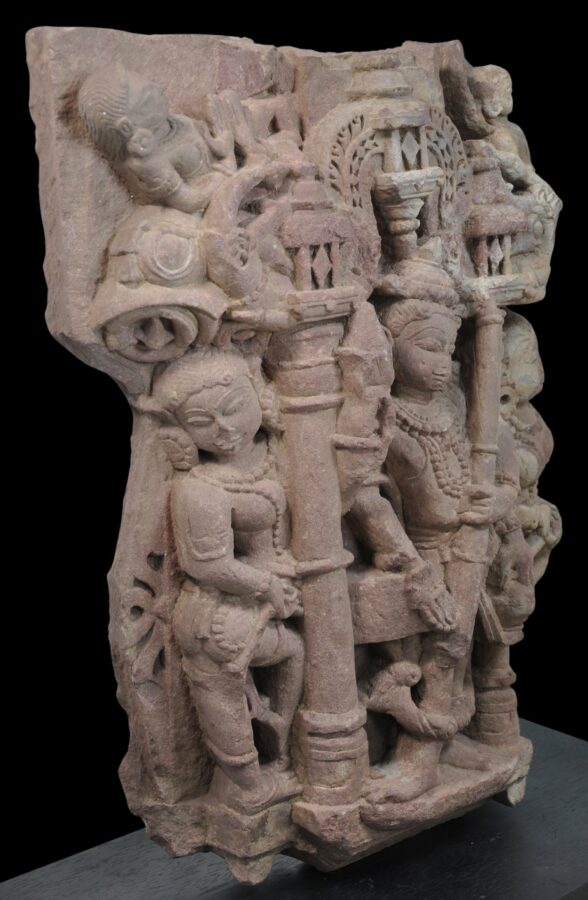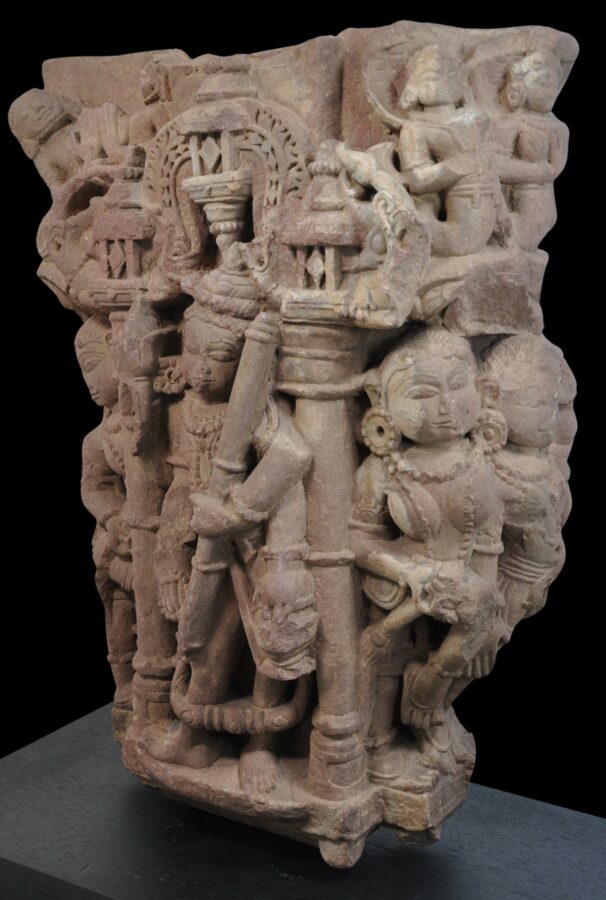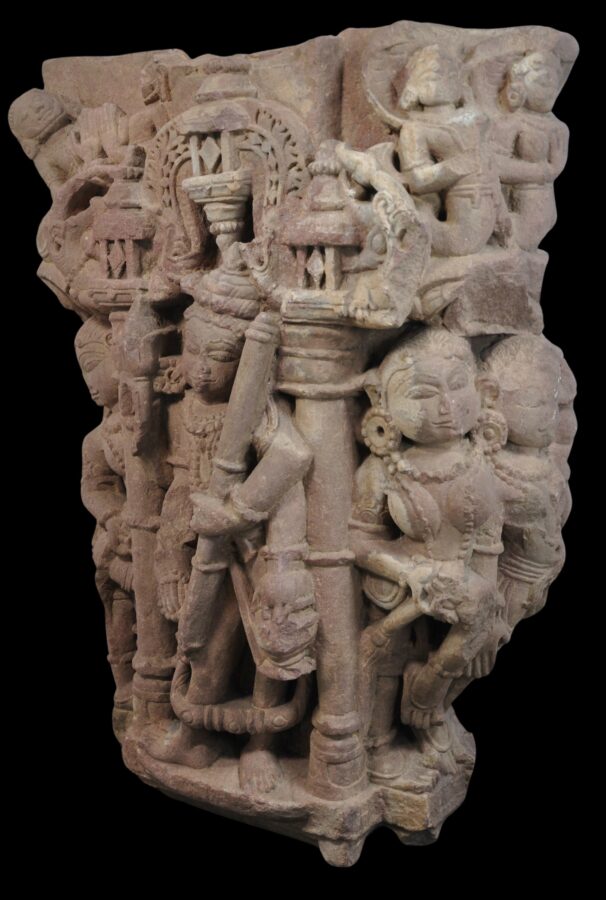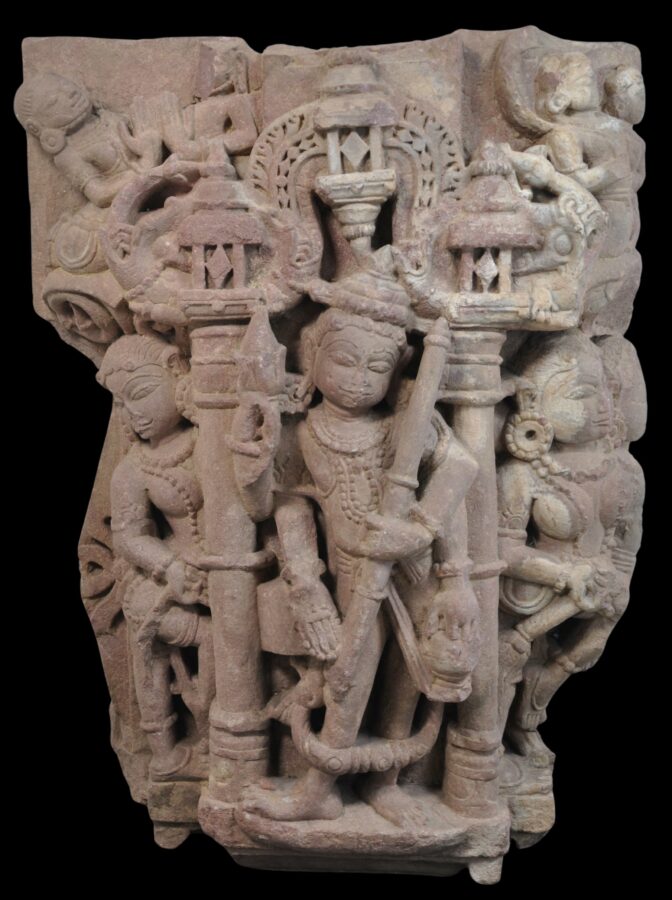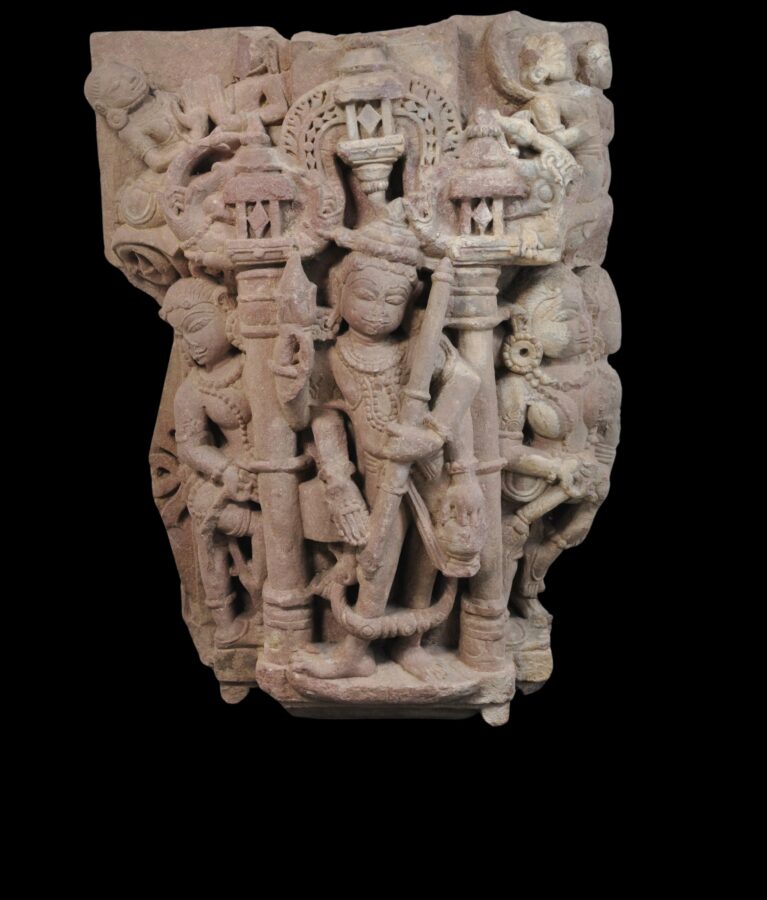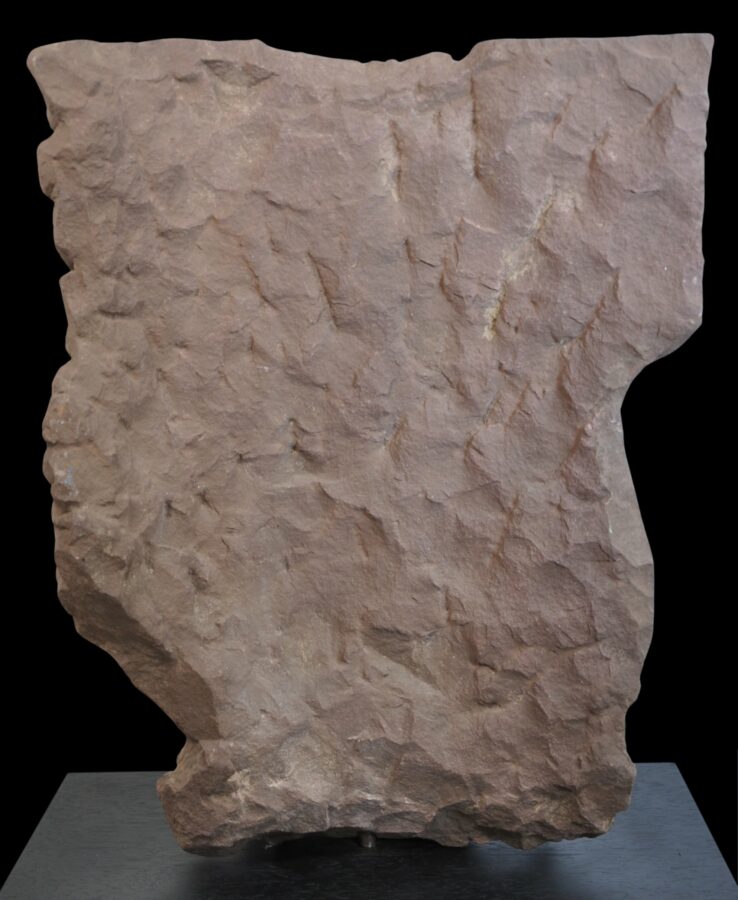Early Indian Pink Sandstone Relief of a Male Deity with Female Attendants
Madhya Pradesh, India
Chandella Dynasty, late 11th or 12th century
height: 58cm, width: 42.2cm
Provenance
private UK collection since circa 2000; prior to that in a private Anglo-Dutch collection since circa 1990. Most probably has been in the UK or Europe since colonial times.
This intricate sandstone panel shows a central, four-armed male deity between two panels. He holds a lotus (padma) and a rosary in his right hands and a mace (gada) and a water pot in his left hands. Female attendants emerge from behind each pillar that frames the central male deity. Pairs of seated figures are at the top of the relief, above the gaping mouths of crocodile-like makaras. Their hair is pulled back tightly and they wear large earrings. Perhaps they are sages.
A very similar example is in the Dallas Museum of Art and illustrated in Bromberg (2013, p. 57) and it is likely that the museum example and the example here have come from the same complex in central India.
As Bromberg (2013, p. 57) points out, the styling of the relief is similar to the reliefs that adorn the exterior walls of temples such as those at Khajuraho, and most particularly the Duladeo Temple, and so it is reasonable to assign a similar dating to this relief, ie late 11th or 12th century. Other characteristics also point to this dating such as the exaggerated, high eyebrows.
The Chandella (Chandela) Dynasty ruled much of central India, especially the Bundelkhana region between the 9th and the 13th centuries. The Chandellas belonged a Rajput clan. The power rose and fell based on their prospects on the battlefield. They became well-known for the art and architecture, most notably for the temples at their original capital Khajuraho. (Later, their capital moved to Mahoba.)
The relief is mounted on an attractive, black, custom-made stand for display purposes.
References
Bromberg, A., et al., The Arts of India, Southeast Asia, and the Himalayas: At the Dallas Museum of Art, Yale University Press, 2013.


